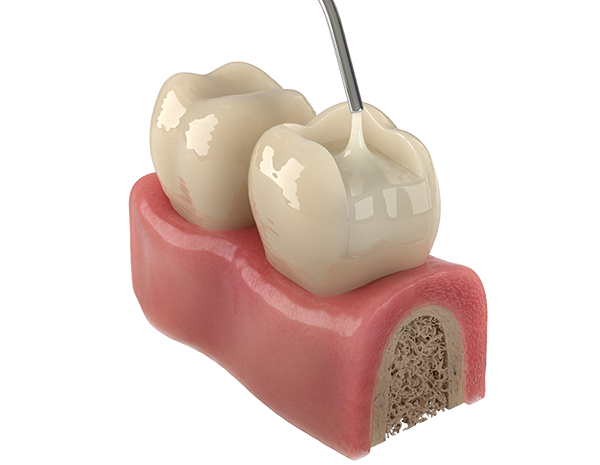Author: Prof. Dr. Marcos Barceleiro
There is a trend, in current dentistry, of simplifying and accelerating clinical procedures, which has been followed by the manufacturers of materials. That demand is reinforced by patients and professionals who want to have faster procedures without compromising quality.
Such simplification has been noticed in several specialties. More specifically in restorative and esthetic dentistry. Two groups of materials in particular have been undergoing the greatest modifications, aiming at simplifying and accelerating procedures – adhesive systems and composites.
However, composites in general had not been following that evolution, and, one of the main problems related to that group of materials, known for the tension generated by the polymerization shrinkage, still made the direct restorative techniques, with the use of small increments with no more than 2mm of thickness, the most recommended and the most frequently carried out technique by dental professionals.
Although that is a very current discussion, the problem is old and several attempts to develop a material that could be used without those risks have been tried in the last years. Some of those attempts even proved to be reasonable in initial lab tests3, however, the clinical evaluations⁴ that followed through did not show the same favorable results and many ideas were discarded.
As they are usually more translucent, to provide correct photopolymerization of the deepest areas of those larger increments, those new materials do not show the appropriate esthetics for anterior teeth involving esthetic veneers. Thus, bulk fill composites are recommended only for restorations on posterior teeth (all faces) or anterior teeth when there is no esthetic implication.

Basically, there are two types of bulk fill composites available in the market: the low viscosity bulk fill composites, known as bulk fill flow composites, and the medium viscosity bulk fill composites (similar consistency of most of the composites), known as regular bulk fill composites. The bulk fill flow composites show inferior mechanical strength, and, therefore, when used in cavities that involve the occlusal face, must be covered on that face by a traditional composite or by a regular bulk fill composite. The regular bulk fill composites can be used for the complete filling of cavities where they are used.
In both cases, the manufacturers found different ways to decrease the polymerization shrinkage rate. However, recent studies5 have already demonstrated that the key for the success of all bulk fill type composites is the capacity to photopolymerize the deeper layers (beyond the traditional 2mm).
It is in that area that the FGM bulk fill composites Opus Bulk Fill APS (regular) and Opus Bulk Fill Flow APS stand out in a positive way. They have, in their formula, a new FGM-patented photoinitiator, the APS, which has proven to promote a greater polymerization conversion and allow for the photopolymerization of deeper portions of increments⁶.
As we are dealing with something new, some questions have arisen as the use of those materials became more and more common in the clinics.
A piece of information that is of critical clinical importance and that completely justifies the use of those materials for direct restorations is the economy of time when they are used. For requiring a smaller number of operatory steps, with the possibility of being carried out many times with one single increment (cavities that are less than 5mm deep), restorations with those materials can be completed 70% faster when compared to restorations done using the incremental technique.
The time-saving advantage can promote a significant increase in the productive capacity of the dental office (in terms of number of restorations done throughout a day) or, in another analysis, can promote a considerable reduction in costs involved in a direct restoration (since a shorter clinical time means lower costs for a dental office).
In conclusion, bulk fill composites are recommended for direct restoration in class I occlusal, class II and class V cavities, being the two last ones in the case of no esthetic implications. And, thinking of a summarized clinical step-by-step guidance, they should be used in the following way:
Bulk fill flow composite
Aafter the use of the adhesive system, this composite may be inserted in increments of up to 4mm, provided that at least 1mm is left free close to the occlusal face of the teeth. Once inserted, this composite must be photopolymerized adequately for at least 20 seconds, with equipment with minimum potency of 450mW/ cm2 with wave length of 400-500nm.
Then, the occlusal portion of the restoration must be finalized with a traditional composite, by means of the incremental technique or by a regular bulk fill composite, which can be used in one single increment that must also be photopolymerized for at least 40 seconds. After the finalization of the restoration, the absolute isolation must be removed, the occlusion must be checked and the finishing must be done and the restoration can be polished.
Regular bulk fill composite
After the use of the adhesive system, this composite can be inserted in increments of up to 5mm and they can fill up the whole cavity if that is the case. Once inserted, the sculpting may be carried out and the composite must then be adequately photopolymerized (for at least 40 seconds, with photopolymerizing equipment with emissions close to 1,000 mW/cm2). After the finalization of the restoration, the absolute isolation must be removed, the occlusion must be checked and the finishing must be carried out. Then the restoration can be polished.
References
- Fehrenbach J, Isolan CP, Münchow EA. Is the presence of 10-MDP associated to higher bonding performance for self-etching adhesive systems? A meta-analysis of in vitro studies. Dent Mater. 2021 Oct;37(10):1463-1485. doi: 10.1016/j.dental.2021.08.014.
- Matos TP, Perdigão J, de Paula E, Coppla F, Hass V, Scheffer RF, Reis A, Loguercio AD. Five-year clinical evaluation of a universal adhesive: A randomized double-blind trial. Dent Mater. 2020 Nov;36(11):1474-1485. doi: 10.1016/j.dental.2020.08.007.
- Barceleiro MO, Soares GM, Espindola O, Kahn S, Pola Poiate IA, Sampaio Filho HR. Low-shrinkage composites: an in vitro evaluation of sealing ability after occlusal loading. Gen Dent. 2015 May-Jun;63(3):e36-40.
- Schmidt M, Kirkevang LL, Hørsted-Bindslev P, Poulsen S. Marginal adaptation of a low-shrinkage silorane-based composite: 1-year randomized clinical trial. Clin Oral Investig. 2011 Apr;15(2):291-5. doi: 10.1007/s00784-010-0446-2.
- Van Ende A, De Munck J, Lise DP, Van Meerbeek B. Bulk-Fill Composites: A Review of the Current Literature. J Adhes Dent. 2017;19(2):95-109.
- Carvalho RF, Cardenas A, Carvalho CN, de Souza JJ, Bauer J, Siqueira F, Armas-Vega A, Loguercio AD, Hass V. Effect of the Photo-initiator System Contained in Universal Adhesives on Radicular Dentin Bonding. Oper Dent. 2020 Sep 1;45(5):547-555. doi: 10.2341/19-146-L.
- Marins SS*, Santo TME, Batista HS, Ornellas GD, Correa LSA, Barcelos R, Calazans FS, Barceleiro MO. O uso de resinas Bulk-Fill aumenta o risco de sensibilidade pós-operatória? Resultados de um estudo clínico randomizado. Braz Oral Res. 2020 Sep, 34(Supl.2): p. 260 Res. PN0344.
- Tardem C, Albuquerque EG, Lopes LS, Marins SS, Calazans FS, Poubel LA, Barcelos R, Barceleiro MO. Clinical time and postoperative sensitivity after use of bulk-fill (syringe and capsule) vs. incremental filling composites: a randomized clinical trial. Braz Oral Res. 2019 Sep 16;33(0):e089. doi: 10.1590/1807-3107bor-2019.vol33.0089.
- Veloso SRM, Lemos CAA, de Moraes SLD, do Egito Vasconcelos BC, Pellizzer EP, de Melo Monteiro GQ. Clinical performance of bulk-fill and conventional resin composite restorations in posterior teeth: a systematic review and meta-analysis. Clin Oral Investig. 2019 Jan;23(1):221-233. doi: 10.1007/s00784-018-2429-7.























